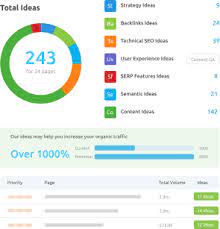The Power of Location Analytics in Business
Location analytics is a powerful tool that businesses are increasingly leveraging to gain valuable insights and make informed decisions. By analysing location-based data, companies can uncover patterns, trends, and correlations that help them understand customer behaviour, optimise operations, and drive growth.
Understanding Customer Behaviour
One of the key benefits of location analytics is its ability to provide deep insights into customer behaviour. By analysing data such as foot traffic, dwell times, and popular routes within a physical space, businesses can better understand how customers interact with their products or services. This information can be used to improve store layouts, enhance product placement, and tailor marketing strategies to meet the needs and preferences of customers.
Optimising Operations
Location analytics also plays a crucial role in optimising operational efficiency. By analysing data on employee movements, equipment usage, and workflow patterns within a facility, businesses can identify bottlenecks, streamline processes, and allocate resources more effectively. This leads to cost savings, improved productivity, and enhanced overall performance.
Enhancing Marketing Strategies
Location analytics enables businesses to create targeted marketing campaigns based on real-time data. By analysing demographic information, consumer behaviour patterns, and geographic trends, companies can deliver personalised messages to the right audience at the right time. This not only increases the effectiveness of marketing efforts but also enhances customer engagement and loyalty.
Driving Growth and Innovation
With the rapid advancements in technology such as GPS tracking, mobile apps, and IoT devices, the scope of location analytics continues to expand. Businesses are using this wealth of data to drive innovation, develop new products and services tailored to specific locations or customer segments, and stay ahead of competitors in an increasingly competitive market.
The Future of Location Analytics
As businesses continue to recognise the value of location analytics in gaining a competitive edge and improving decision-making processes, we can expect to see further advancements in this field. From predictive analytics to real-time location tracking technologies, the future holds endless possibilities for businesses looking to harness the power of location-based data.
In conclusion, location analytics is not just a trend but a strategic imperative for businesses seeking growth and success in today’s digital age. By leveraging the insights derived from location-based data effectively, companies can unlock new opportunities for innovation, efficiency improvements and enhanced customer experiences.
8 Essential Tips for Mastering Location Analytics in Business
- Utilize geographic information systems (GIS) for in-depth location analysis.
- Collect and analyse data on customer demographics and behaviour to understand their preferences.
- Use heat maps to visualise areas of high activity or interest.
- Incorporate real-time data to make timely business decisions based on current trends.
- Consider factors like foot traffic, competition proximity, and accessibility when choosing a location for a business.
- Implement geofencing technology to target customers in specific locations with relevant promotions or information.
- Monitor and track key performance indicators (KPIs) related to location-based activities for continuous improvement.
- Stay updated on advancements in location analytics tools and techniques to enhance decision-making processes.
Utilize geographic information systems (GIS) for in-depth location analysis.
To enhance the depth of location analysis, businesses can leverage geographic information systems (GIS) effectively. GIS technology allows companies to overlay various data sets onto geographical maps, enabling them to visualise and analyse spatial relationships and patterns. By utilising GIS for in-depth location analysis, businesses can gain a comprehensive understanding of customer demographics, market trends, and geographic influences on their operations. This strategic use of GIS empowers organisations to make data-driven decisions that drive growth, improve efficiency, and stay ahead in today’s competitive landscape.
Collect and analyse data on customer demographics and behaviour to understand their preferences.
By collecting and analysing data on customer demographics and behaviour, businesses can gain valuable insights into their preferences and behaviours. Understanding the specific demographics that interact with a product or service, as well as how they behave in different locations, allows companies to tailor their offerings to meet customer needs more effectively. By leveraging location analytics in this way, businesses can create targeted marketing campaigns, improve product placement, and enhance overall customer satisfaction by delivering a more personalised experience.
Use heat maps to visualise areas of high activity or interest.
Utilising heat maps is a valuable tip in location analytics to visually represent areas of high activity or interest. By displaying data in a colour-coded format, businesses can quickly identify hotspots where customer engagement is most significant. Heat maps provide a clear and intuitive way to understand patterns, trends, and concentrations of activity, enabling companies to make informed decisions on optimising operations, marketing strategies, and overall customer experience based on the insights gained from these visual representations.
Incorporate real-time data to make timely business decisions based on current trends.
By incorporating real-time data into their location analytics strategy, businesses can make timely and informed decisions that are aligned with current trends. By leveraging up-to-the-minute information on customer behaviour, market dynamics, and operational performance, companies can respond quickly to changing circumstances, seize opportunities as they arise, and stay ahead of the competition. Real-time data empowers businesses to adapt their strategies on the fly, ensuring that their decisions are not only based on historical data but also take into account the most recent developments in the market. This proactive approach enables businesses to maximise their potential for success in today’s fast-paced business environment.
Consider factors like foot traffic, competition proximity, and accessibility when choosing a location for a business.
When selecting a location for a business, it is essential to take into account various factors such as foot traffic, proximity to competitors, and accessibility. Understanding the volume of foot traffic in an area can help determine the potential customer base and sales opportunities. Assessing the proximity to competitors allows businesses to position themselves strategically and differentiate their offerings effectively. Additionally, ensuring easy accessibility for both customers and employees can enhance convenience and attract more visitors. By carefully considering these factors, businesses can make informed decisions that maximise their chances of success in their chosen location.
Implement geofencing technology to target customers in specific locations with relevant promotions or information.
Implementing geofencing technology is a smart strategy for businesses looking to engage with their target customers in specific locations effectively. By setting up virtual boundaries around physical areas, such as stores, events, or neighbourhoods, businesses can deliver targeted promotions, offers, or information to customers who enter those zones. This personalised approach not only increases the relevance of marketing messages but also enhances customer engagement and drives foot traffic to brick-and-mortar locations. Geofencing technology enables businesses to reach their audience at the right time and place, creating a seamless and tailored experience that can lead to increased sales and brand loyalty.
Monitor and track key performance indicators (KPIs) related to location-based activities for continuous improvement.
To maximise the benefits of location analytics, it is essential to monitor and track key performance indicators (KPIs) related to location-based activities. By continuously measuring and analysing metrics such as foot traffic, customer engagement, and sales conversion rates in different locations, businesses can identify trends, opportunities, and areas for improvement. This data-driven approach enables companies to make informed decisions, optimise strategies, and drive continuous improvement in their operations and customer interactions based on real-time insights derived from location analytics.
Stay updated on advancements in location analytics tools and techniques to enhance decision-making processes.
To maximise the benefits of location analytics, it is crucial to stay informed about the latest advancements in tools and techniques within the field. By keeping up-to-date with emerging technologies and best practices, businesses can enhance their decision-making processes and gain a competitive edge. Continuous learning and adaptation to new trends in location analytics enable companies to leverage cutting-edge solutions that provide deeper insights, improved accuracy, and more effective strategies for driving business growth.





